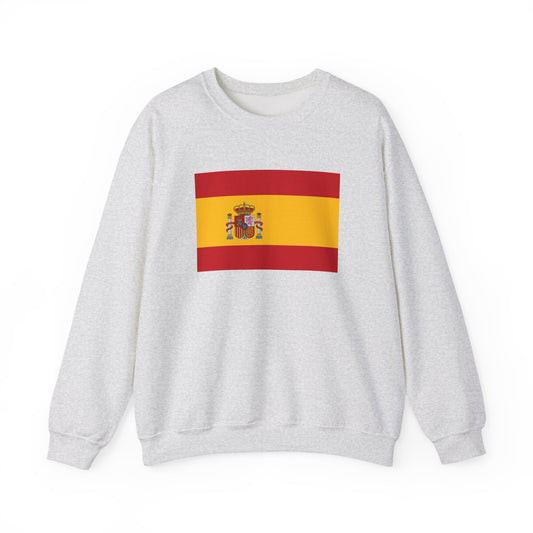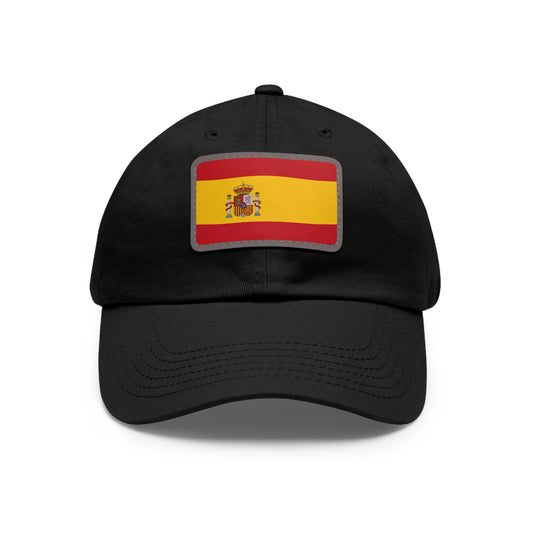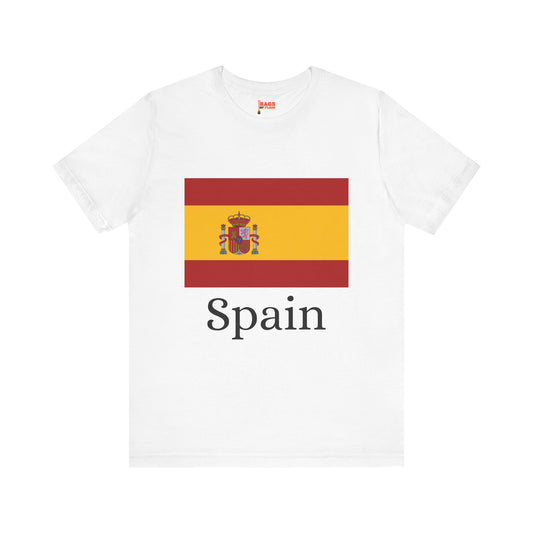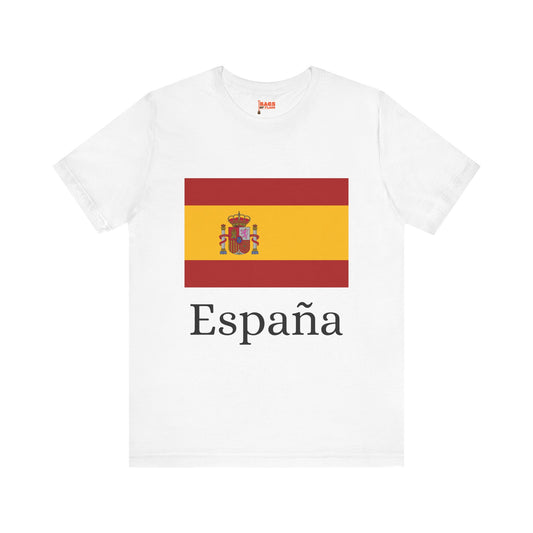-
Spain Flag Sweatshirt
Regular price $34.15 USDRegular priceUnit price / per -
España Sweatshirt
Regular price $34.15 USDRegular priceUnit price / per -
Spain Sweatshirt
Regular price $34.15 USDRegular priceUnit price / per -
Spain Inspired Sweatshirt
Regular price $34.15 USDRegular priceUnit price / per -
Spain Pillow
Regular price $22.65 USDRegular priceUnit price / per -
Spain Backpack
Regular price $59.79 USDRegular priceUnit price / per -
Spain Leather Patch Hat
Regular price $18.85 USDRegular priceUnit price / per -
Spain Trucker Cap
Regular price $14.90 USDRegular priceUnit price / per -
Spain Hoodies
Regular price $34.40 USDRegular priceUnit price / per -
Spain Inspired Hoodie
Regular price $34.40 USDRegular priceUnit price / per -
Spain T-shirts
Regular price $22.79 USDRegular priceUnit price / per -
Spain Flag Hoodies
Regular price $34.40 USDRegular priceUnit price / per -
Spain Inspired T-shirt
Regular price $22.79 USDRegular priceUnit price / per -
Spain Flag on T-shirt
Regular price $22.79 USDRegular priceUnit price / per -
España Hoodies
Regular price $34.40 USDRegular priceUnit price / per -
España T-shirts
Regular price $22.79 USDRegular priceUnit price / per
Collection: Spain
The Spanish flag, also known as the flag of Spain, is a significant symbol representing the country's rich history and culture. With its vibrant colors and intricate design, the flag of Spain holds great importance to the Spanish people. We will delve into the fascinating facts surrounding the Spanish flag, from its design and historical context to its symbolism and current relevance.
Overview of the Spain Flag's Design and Colors

The flag of Spain showcases a dynamic and visually striking design, characterized by three horizontal bands of color: two red outer stripes flanking a larger central yellow band. This arrangement creates a bold contrast, with the yellow band being twice as thick as the red one, ensuring the flag's distinctive appearance. Spain's national coat of arms, positioned towards the hoist side, is centered within the expansive yellow field. The coat of arms is intricate, featuring the Pillars of Hercules, wrapped in banners displaying the traditional motto "Plus Ultra".
This emblem is topped with a royal crown, symbolizing the constitutional monarchy of Spain, and incorporates various elements that represent the diverse historical kingdoms of Spain. The choice of red and yellow, colors steeped in centuries of history, makes the Spanish flag recognizable and embeds it with deep cultural and historical significance. The specific arrangement and hues of the flag's design were carefully chosen to embody the spirit and traditions of the Spanish nation, making it a powerful symbol of national identity and pride.
Historical Context Surrounding the Spain Flag
The emblematic national colors of red and yellow were first officially recognized in the latter part of the 18th century under the reign of King Charles III. The King sought a distinctive flag for his naval forces that could be easily distinguished from those of other nations, especially from a distance at sea. This necessity led to adopting the red and yellow color scheme that is now synonymous with the Spanish identity. The specific configuration of the flag, as we recognize it today, was solidified in 1981 in alignment with the country's new constitution.
This moment marked a significant reestablishment of national symbols in post-Franco Spain, serving not just as a reaffirmation of the monarchy but also as a representation of Spain's autonomous communities and its commitment to a unified yet diverse national identity. Throughout its history, the flag has witnessed several modifications, each reflecting the evolving political landscape of Spain. From its naval origins to its current status as a symbol of national unity, the flag's design encapsulates the resilience and adaptation of Spain through centuries of change.
Symbolism Embodied in the Flag
The Spanish flag's vibrant red and golden yellow hues carry a wealth of meaning rooted in the nation's past. Historically, the red stripes symbolize the strength and bravery of the Spanish people, highlighting their courage in the face of adversity throughout the centuries. The yellow, on the other hand, symbolizes the sun that shines on the Spanish soil, reflecting the country's optimism and the wealth it has generated over the years. At the heart of the flag, the national coat of arms, positioned towards the hoist side, stands as a complex symbol that integrates elements representing the historical kingdoms of Spain.
The Pillars of Hercules, which flank the shield, denote Spain's significant role in global exploration and its historical gateway between the Atlantic and the Mediterranean. These elements, combined with the "Plus Ultra" motto, which translates to "further beyond," encourage the pursuit of progress and exploration beyond known boundaries. Together, these symbols honor Spain's rich history and cultural diversity and inspire a collective identity and an enduring spirit of discovery among its people.
Current Relevance of the Spain Flag
In contemporary Spain, the national flag plays a pivotal role. It serves as a central emblem during various public gatherings, such as Independence Day celebrations, official state functions, and international sports events, where it galvanizes support for national teams. Beyond these visible displays of patriotism, the flag is deeply integrated into the fabric of daily life, often adorning public buildings, educational institutions, and private residences.
Despite its widespread acceptance and use, the flag has occasionally been at the heart of political discourse and debate. Some regions in Spain, with distinct cultural identities and languages, have expressed desires for greater representation within the national symbol. These discussions underscore the dynamic nature of national symbols in representing a diverse and evolving society. As such, the flag's significance extends beyond mere patriotism; it is a focal point for conversations about national unity, identity, and the ongoing journey toward embracing Spain's rich tapestry of cultures.
Additional Facts and Protocols for the Spain Flag
The Spain flag is subject to a set of protocols that dictate its proper display and handling, ensuring it is always treated with the utmost respect. These protocols are not only a reflection of national pride but also of the historical and cultural reverence held for the flag. According to these guidelines, the flag must be displayed from dawn until dusk, symbolizing the nation’s enduring spirit. It is paramount that the flag never makes contact with the ground or any surface below it, maintaining its dignity and sanctity.
During formal events and ceremonies, the flag is ceremoniously hoisted and lowered, embodying the solemn respect it commands. In addition to these protocols, the Spain flag has a unique characteristic that sets it apart from many other national flags: its design varies on the front and back sides, with the coat of arms being present only on the obverse. This distinctive feature underscores the flag’s complexity and the attention to detail in its presentation.
Moreover, when displayed alongside other flags, the Spain flag takes a position of prominence, a testament to its sovereign status. This careful consideration of display order further emphasizes the flag's role as a symbol of national unity and pride. The adherence to these protocols and the recognition of the flag’s unique features serve as a daily reminder of Spain's rich heritage and the values it represents.


































